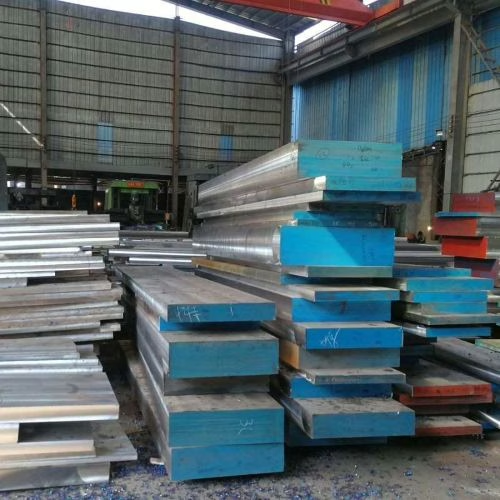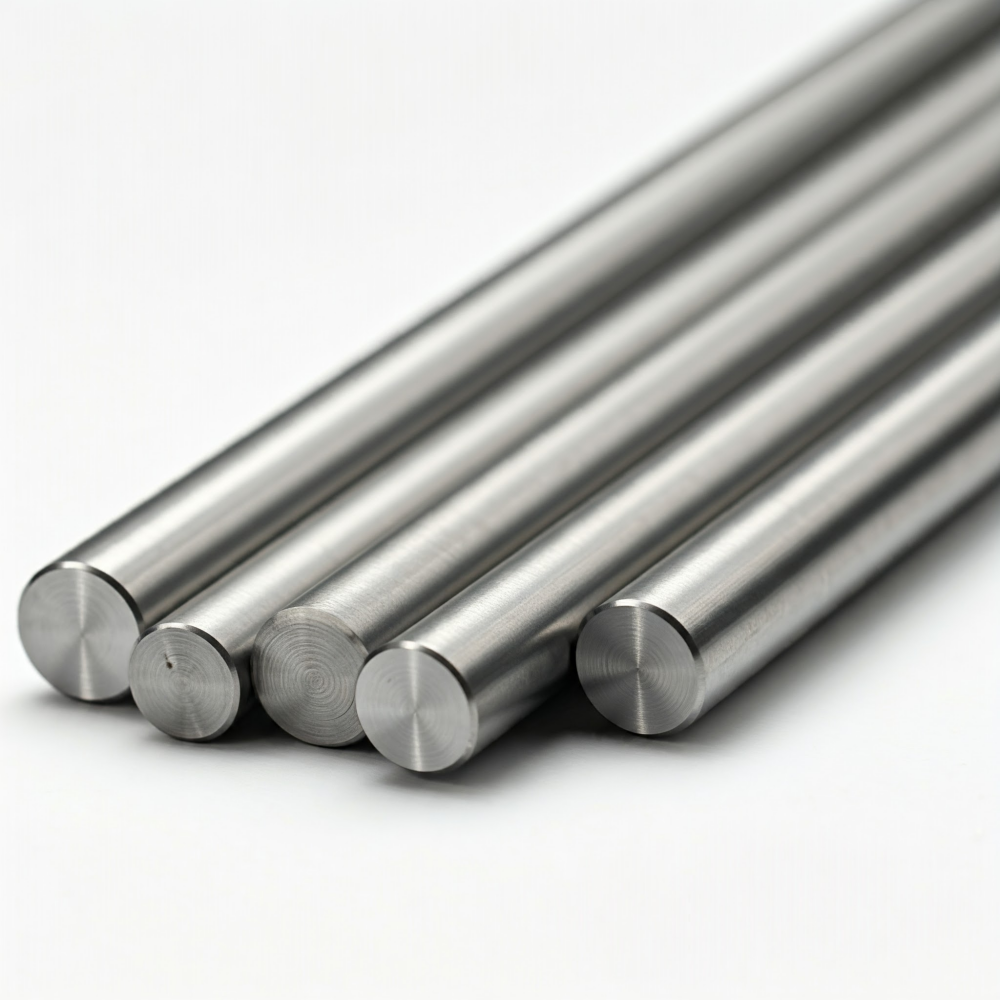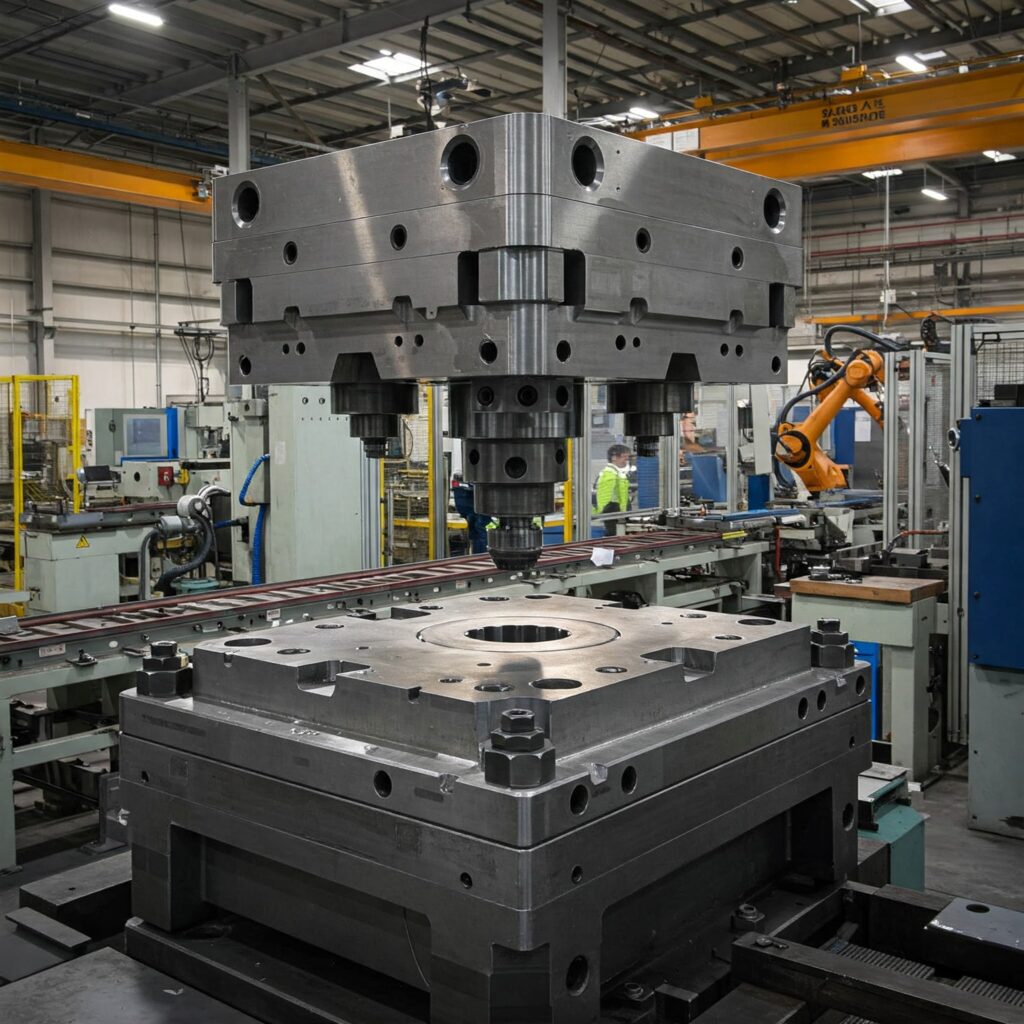4130 مقابل 4140 الفولاذ: دعونا نقارن فولاذ 4130 و AISI فولاذ 4140، بالسحب المباشر. كلاهما يُصنفان كفولاذ متوسط الكربون ومنخفض السبائك، وينتميان إلى عائلة فولاذ سبائك الكروم والموليبدينوم.

التركيب الكيميائي
الفولاذ 4130 مقابل 4140: مقارنة التركيب
| العنصر | AISI 4130 (wt%) | AISI 4140 (wt%) | ملحوظات |
| الكربون | 0.28-0.33 | 0.38-0.43 | محتوى الكربون أعلى في 4140 |
| المنغنيز | 0.40-0.60 | 0.75-1.00 | محتوى المنجنيز أعلى في 4140 |
| السيليكون | 0.20-0.35 | 0.20-0.35 | |
| الكروم | 0.80-1.10 | 0.80-1.10 | |
| الموليبدينوم | 0.15-0.25 | 0.15-0.25 |
الخصائص الميكانيكية
فولاذ 4130 مقابل فولاذ 4140: مقارنة الخصائص. تعتمد الخصائص الميكانيكية بشكل كبير على المعالجة الحرارية المُطبقة وحجم مقطع المادة. البيانات الواردة في هذا القسم مُقتبسة مباشرةً من ASM International (1991). دليل ASM، المجلد 4: المعالجة الحرارية (ص 500-503). ASM الدولية.
الخصائص الميكانيكية النموذجية للفولاذ 4130 المعالج حرارياً.
| درجة حرارة التلطيف | قوة الشد | قوة الخضوع | الاستطالة في 50 مم (2 بوصة)، % | انخفاض في المساحة، % | الصلابة، HB | طاقة تأثير إيزود | ||||
| درجة مئوية | درجة فهرنهايت | ميجا باسكال | كسي | ميجا باسكال | كسي | |||||
| مُخمَّد ومُعالَج بالماء. قضبان مستديرة بقطر 25 مم (1 بوصة) مُخمَّدة من 845 إلى 870 درجة مئوية (1550 إلى 1600 درجة فهرنهايت). | ||||||||||
| 205 | 400 | 1765 | 256 | 1765 | 1520 | 10 | 33 | 475 | 18 | 13 |
| 260 | 500 | 1670 | 242 | 1670 | 1430 | 11.5 | 37 | 455 | 14 | 10 |
| 315 | 600 | 1570 | 228 | 1570 | 1340 | 13 | 41 | 425 | 14 | 10 |
| 370 | 700 | 1475 | 214 | 1475 | 1250 | 15 | 45 | 400 | 20 | 15 |
| 425 | 800 | 1380 | 200 | 1380 | 1170 | 16.5 | 49 | 375 | 34 | 25 |
| 540 | 1000 | 1170 | 170 | 1170 | 1000 | 20 | 56 | 325 | 81 | 60 |
| 650 | 1200 | 965 | 140 | 965 | 830 | 22 | 63 | 270 | 135 | 100 |
| مُخمَّد بالزيت ومُقوَّى. قضبان مستديرة بقطر 25 مم (1 بوصة) مُخمَّدة عند درجة حرارة 860 درجة مئوية (1575 درجة فهرنهايت). | ||||||||||
| 205 | 400 | 1550 | 225 | 1340 | 195 | 11 | 38 | 450 | / | / |
| 260 | 500 | 1500 | 218 | 1275 | 185 | 11.5 | 40 | 440 | / | / |
| 315 | 600 | 1420 | 206 | 1210 | 175 | 12.5 | 43 | 418 | / | / |
| 370 | 700 | 1320 | 192 | 1120 | 162 | 14.5 | 48 | 385 | / | / |
| 425 | 800 | 1230 | 178 | 1030 | 150 | 16.5 | 54 | 360 | / | / |
| 540 | 1000 | 1030 | 150 | 840 | 122 | 20 | 60 | 305 | / | / |
| 650 | 1200 | 830 | 120 | 670 | 97 | 24 | 67 | 250 | / | / |
تأثير الكتلة على الخصائص النموذجية للفولاذ 4130 المعالج حرارياً
| حجم الشريط (مم) | حجم الشريط (بوصة) | قوة الشد (ميجا باسكال) | قوة الشد (ksi) | قوة الخضوع (ميجا باسكال) | قوة الخضوع (ksi) | الاستطالة في 50 مم (2 بوصة)، % | انخفاض في المساحة، % | صلابة السطح، HB |
| 25 | 1 | 1040 | 151 | 880 | 128 | 18 | 55 | 307 |
| 50 | 2 | 740 | 107 | 570 | 83 | 20 | 58 | 223 |
| 75 | 3 | 710 | 103 | 540 | 78 | 22 | 60 | 217 |
ملاحظة: قضبان مستديرة مُخمدة بالزيت عند درجة حرارة 845 درجة مئوية (1550 درجة فهرنهايت) ومُقسّاة عند درجة حرارة 540 درجة مئوية (1000 درجة فهرنهايت)؛ قطر شد 12.83 مم (0.505 بوصة)
الخصائص الميكانيكية النموذجية للفولاذ 4140 المعالج حرارياً
| درجة حرارة التلطيف (°م) | درجة حرارة التلطيف (°ف) | قوة الشد (ميجا باسكال) | قوة الشد (ksi) | قوة الخضوع (ميجا باسكال) | قوة الخضوع (ksi) | الاستطالة في 50 مم (2 بوصة)، % | انخفاض في المساحة، % | الصلابة، HB | طاقة تأثير إيزود (جول) | طاقة تأثير إيزود (قدم·رطل) |
| 205 | 400 | 1965 | 285 | 1740 | 252 | 11 | 42 | 578 | 15 | 11 |
| 260 | 500 | 1860 | 270 | 1650 | 240 | 11 | 44 | 534 | 11 | 8 |
| 315 | 600 | 1720 | 250 | 1570 | 228 | 11.5 | 46 | 495 | 9 | 7 |
| 370 | 700 | 1590 | 231 | 1460 | 212 | 12.5 | 48 | 461 | 15 | 11 |
| 425 | 800 | 1450 | 210 | 1340 | 195 | 15 | 50 | 429 | 28 | 21 |
| 480 | 900 | 1300 | 188 | 1210 | 175 | 16 | 52 | 388 | 46 | 34 |
| 540 | 1000 | 1150 | 167 | 1050 | 152 | 17.5 | 55 | 341 | 65 | 48 |
| 595 | 1100 | 1020 | 148 | 910 | 132 | 19 | 58 | 311 | 93 | 69 |
| 650 | 1200 | 900 | 130 | 790 | 114 | 21 | 61 | 277 | 112 | 83 |
| 705 | 1300 | 810 | 117 | 690 | 100 | 23 | 65 | 235 | 136 | 100 |
تأثير الكتلة على الخصائص النموذجية للفولاذ 4140 المعالج حرارياً
| قطر الشريط (مم) | قطر الشريط (بوصة) | قوة الشد (ميجا باسكال) | قوة الشد (ksi) | قوة الخضوع (ميجا باسكال) | قوة الخضوع (ksi) | الاستطالة في 50 مم (2 بوصة)، % | انخفاض في المساحة، % | صلابة السطح، HB |
| 25 | 1 | 1140 | 165 | 985 | 143 | 15 | 50 | 335 |
| 50 | 2 | 920 | 133 | 750 | 109 | 18 | 55 | 202 |
| 75 | 3 | 860 | 125 | 655 | 95 | 19 | 55 | 293 |
ملاحظة: قضبان مستديرة مُخمدة بالزيت عند درجة حرارة 845 درجة مئوية (1550 درجة فهرنهايت) ومُقسّاة عند درجة حرارة 540 درجة مئوية (1000 درجة فهرنهايت)؛ عينات شد بقطر 12.83 مم (0.505 بوصة) مقطوعة من مركز قضبان بقطر 25 مم ومن منتصف نصف قطر قضبان بقطر 50 و75 مم

إجراءات المعالجة الحرارية
4140 المعالجة الحرارية
- التطبيع: يُسخّن إلى درجة حرارة تتراوح بين 870 و925 درجة مئوية (1600 و1700 درجة فهرنهايت) ويُحفظ لمدة ساعة على الأقل أو 15 إلى 20 دقيقة لكل 25 مم (بوصة واحدة) من أقصى سمك للمقطع؛ ويُبرّد بالهواء. غالبًا ما يُجرى التطبيع عند درجة حرارة 480 درجة مئوية (900 درجة فهرنهايت) أو أعلى بعد التطبيع لتقليل مقاومة الخضوع.
- التلدين:التسخين إلى 830 إلى 870 درجة مئوية (1525 إلى 1600 درجة فهرنهايت) والاحتفاظ بها لفترة زمنية تعتمد على سمك القسم أو حمل الفرن؛ التبريد في الفرن عند حوالي 15 درجة مئوية/ساعة (30 درجة فهرنهايت/ساعة) إلى 480 درجة مئوية (900 درجة فهرنهايت) ثم التبريد بالهواء.
- إخماد:إنه عبارة عن سبائك فولاذية صلبة مقاومة للماء.
4130 المعالجة الحرارية
- التطبيع: قم بالتسخين إلى 845 إلى 925 درجة مئوية (1550 إلى 1700 درجة فهرنهايت) واتركه لمدة ساعة على الأقل أو 15 إلى 20 دقيقة لكل 25 مم (1 بوصة) من أقصى سمك للمقطع؛ ثم قم بالتبريد بالهواء.
- التلدين: التسخين إلى 830 إلى 870 درجة مئوية (1525 إلى 1600 درجة فهرنهايت) والاحتفاظ به لفترة زمنية تعتمد على سمك القسم أو حمل الفرن؛ التبريد في الفرن عند حوالي 15 درجة مئوية/ساعة (30 درجة فهرنهايت/ساعة) إلى 480 درجة مئوية (900 درجة فهرنهايت) ثم التبريد بالهواء.
- التبريد: تبريد بالزيت عند درجة حرارة 855 درجة مئوية (1575 درجة فهرنهايت) أو 845 درجة مئوية (1550 درجة فهرنهايت).
- التطبيع: يتميز بدورة تطبيع بسيطة، تُستخدم عادةً عند درجة حرارة ١٧٥ درجة مئوية (٣٥٠ درجة فهرنهايت). لتجنب الهشاشة الزرقاء، لا يُتطبيع ٤١٤٠ عادةً بين ٢٣٠ و٣٧٠ درجة مئوية (٤٥٠ إلى ٧٠٠ درجة فهرنهايت). تعتمد درجة حرارة التطبيع ووقته على درجة الصلابة المطلوبة.
ملخص
بناءً على خصائصهما وتجربة الاستخدام، فيما يلي ملخص للاختلافات بين الفولاذ 4140 و4340.
يتميز 4140، بفضل محتواه العالي من الكربون والمنجنيز، بقدرة صلابة وقوة أكبر مقارنةً بـ 4130. هذا يجعله مناسبًا للتطبيقات التي تتطلب قوة أكبر في المقاطع الأثقل، بافتراض المعالجة الحرارية المناسبة. يتميز 4140 بقدرة صلابة أفضل، ولكنه يتطلب عملية تبريد أخف من 4130 لتحقيق نفس تأثير التبريد على الأجزاء ذات الهندسة نفسها. يمتلك 4140 احتمالية معينة للتشقق والتشوه بسبب سرعة التبريد المفرطة أثناء عملية التبريد. عند تبريد 4140، من الضروري التحكم بدقة في معاملات التبريد.
بالنسبة للمقاطع الرقيقة، قد يكفي استخدام فولاذ كربوني عادي، أما المقاطع الأثقل التي تتطلب تصلبًا، فيلزم استخدام سبيكة 4140. مع ذلك، قد لا يكون من الضروري اختيار سبيكة أغلى ثمنًا مثل سبيكة 4340 (التي تتميز بصلابة أعلى بفضل النيكل-الكروم-الموليبدينوم) إذا كانت سبيكة 4140 مناسبة. عمومًا، تُعدّ أنواع الفولاذ المحتوية على الكروم-النيكل-الموليبدينوم الأكثر تكلفة، تليها سبائك الكروم-الموليبدينوم، ثم سبائك الكروم-الخماسي.
احصل على عرض أسعار تنافسي للفولاذ 4140 و 4130
بخبرة تزيد عن 20 عامًا في مجال التشكيل، تُعدّ Aobo Steel شريكك الموثوق في فولاذ السبائك عالي الأداء 4140 و4130. لا نوفر المواد فحسب، بل الحلول أيضًا. استفد من معرفتنا العميقة بالصناعة وسلسلة التوريد الموثوقة لدينا لنجاح مشروعك.
✉ تواصل معنا عن طريق ملء النموذج أدناه.


